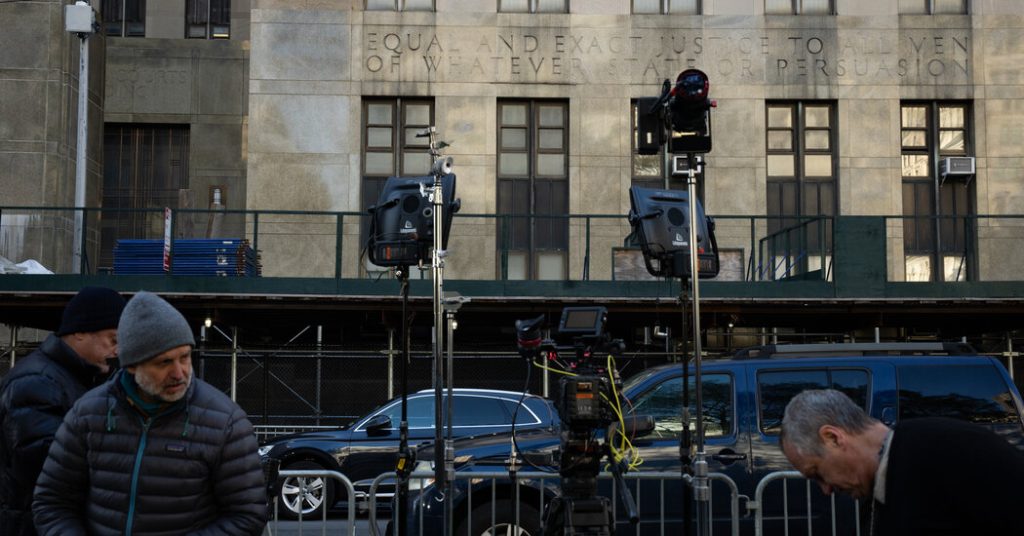The upcoming Manhattan criminal trial of former President Donald J. Trump is expected to attract global attention, but viewers will not be able to watch the proceedings on television. Unlike some federal courts that allow live video or audio feeds of trials, New York courts generally do not permit cameras in the courtroom. However, a feed will be transmitted into an overflow room for reporters, and cameras will be stationed in the hallway to capture Mr. Trump’s remarks as he enters and leaves the courtroom. A New York lawyer has filed a motion on behalf of a civic group and a news website to request that daily transcripts of the trial be made available to the public since it will not be televised.
The trial is scheduled to take place every weekday except Wednesdays, from 9:30 a.m. to 4:30 p.m. This schedule indicates that the proceedings will be comprehensive and intensive, with ample time dedicated to hearing evidence and arguments from both the prosecution and defense. Without a televised broadcast, members of the public and interested parties will have to rely on secondary sources, such as news reports or transcripts, to stay informed about the developments of the trial. The absence of a live broadcast may limit the accessibility of the trial to the general public and could potentially influence public perception and understanding of the case.
The decision not to televise the trial raises questions about transparency and public access to the judicial process. While New York courts have restrictions on broadcasting trials, the high profile nature of this case and the involvement of a former president have led to calls for greater transparency and accountability. The motion filed for daily transcripts indicates a push for more openness and information sharing, so that the public can follow the proceedings and understand the legal arguments and evidence presented in court. The lack of live coverage may spark debates about the balance between privacy concerns and the value of transparency in high-profile trials.
The absence of a televised broadcast may also impact the media coverage and public discourse surrounding the trial of a former president. Without live visuals from the courtroom, media outlets may have to rely on descriptions and summaries of the proceedings, which could potentially lead to varying interpretations and biases in reporting. There may be challenges in accurately conveying the atmosphere and emotions of the courtroom, as well as the nuances of legal arguments, without direct access to live footage. This limitation raises questions about the role of the media in shaping public opinion and understanding of significant legal cases.
Despite the lack of a televised broadcast, the Manhattan criminal trial of Donald J. Trump is expected to draw intense scrutiny and interest from the public and media outlets. The daily schedule of the trial suggests a rigorous and thorough examination of the evidence and legal arguments involved, reflecting the seriousness and complexity of the case. While the absence of live coverage may hinder direct access to the courtroom proceedings, efforts to provide daily transcripts for public viewing indicate a commitment to transparency and accountability in the legal process. The trial’s outcome and any subsequent developments are likely to have far-reaching implications and fuel ongoing discussions about the intersection of law, politics, and media coverage in high-profile cases.


